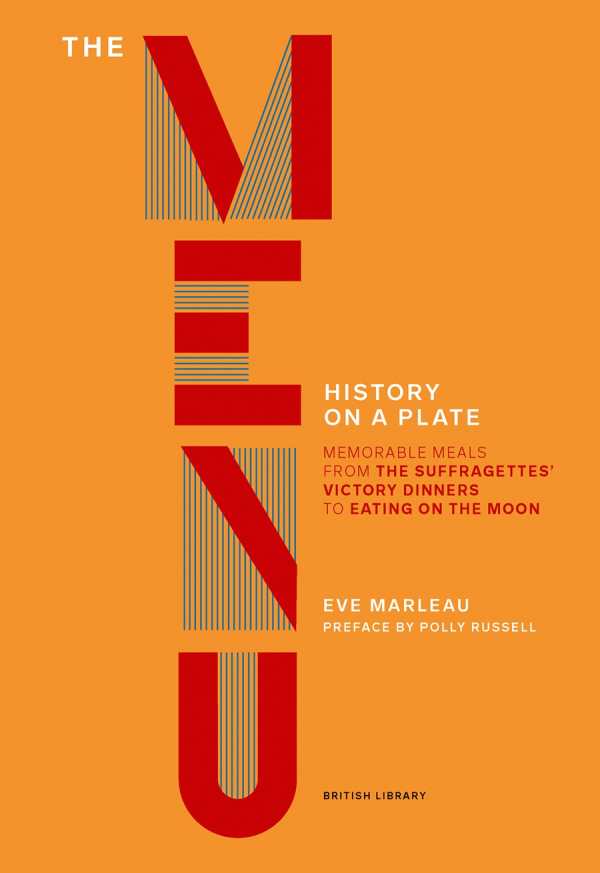The Menu
History on a Plate
In The Menu, Eve Marleau looks back on historical menus as a “fascinating reflection of cultural history and shifts in social trends.” She observes that “there is something tantalising about a menu—it’s simultaneously a promise, an invitation and a set of directions.”
The book includes menus that are revolutionary, that encapsulate social and political change, and that are outrageous and decadent. Each is prefaced by a short paragraph; illustrations of the menus in question help to explain their significance in history. Some entries are as direct as a 1940 wartime dinner menu from the UK, comprised of Bacon Hot Pot, Shredded Cabbage, and Dumplings with Syrup. An unusual Christmas menu from the 1870 siege of Paris includes stuffed donkey’s head because of food shortages; a suffragettes’ victory menu from 1918 is a meaningful addition.
The book’s starter menus are historical starting points for food habits that have since become commonplace. Popcorn, candy, and soda at a movie theater, now considered essential, were not menu items there until the Great Depression. The book’s main menus track social changes and major events around the world, including the introduction of school dinners in 1944, what astronauts ate at the time of the moon landing (the menu reveals: dehydrated food) and what Khrushchev ate when he visited President Eisenhower in 1959 (an all-American menu, designed with intent). Such menus are a reminder of how many important events involve food.
The book moves toward menus that are celebratory, frivolous, creative, and indulgent. Celebrated French chef Marie-Antoine Carême’s over-the-top menu for a dinner hosted by Prince Regent offered no less than seventy dishes. Meanwhile, Haggis, Neeps, and Tatties; Sheep’s Head; and whiskey were on the menu for the very first dinner celebrating Scotland’s poet, Robert Burns. The Menu is an original reading of history that’s packed with clear information.
Reviewed by
Eric Patterson
Disclosure: This article is not an endorsement, but a review. The publisher of this book provided free copies of the book to have their book reviewed by a professional reviewer. No fee was paid by the publisher for this review. Foreword Reviews only recommends books that we love. Foreword Magazine, Inc. is disclosing this in accordance with the Federal Trade Commission’s 16 CFR, Part 255.

